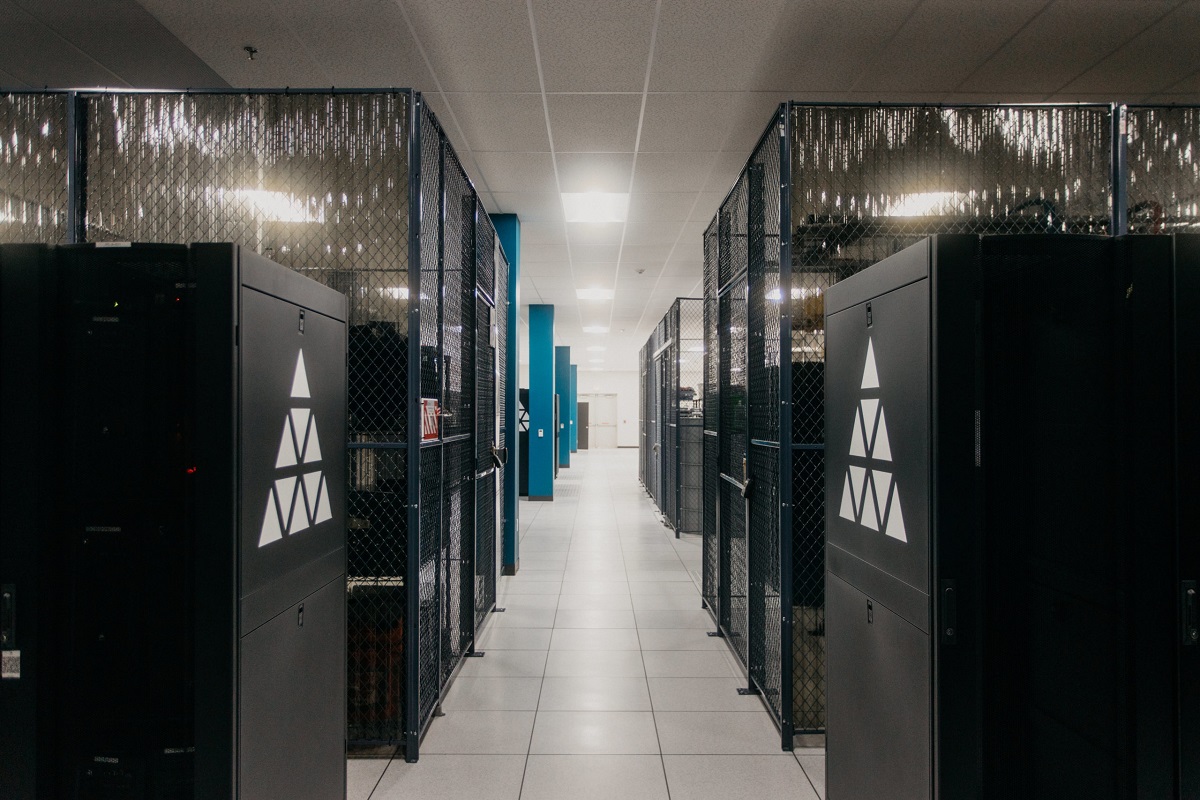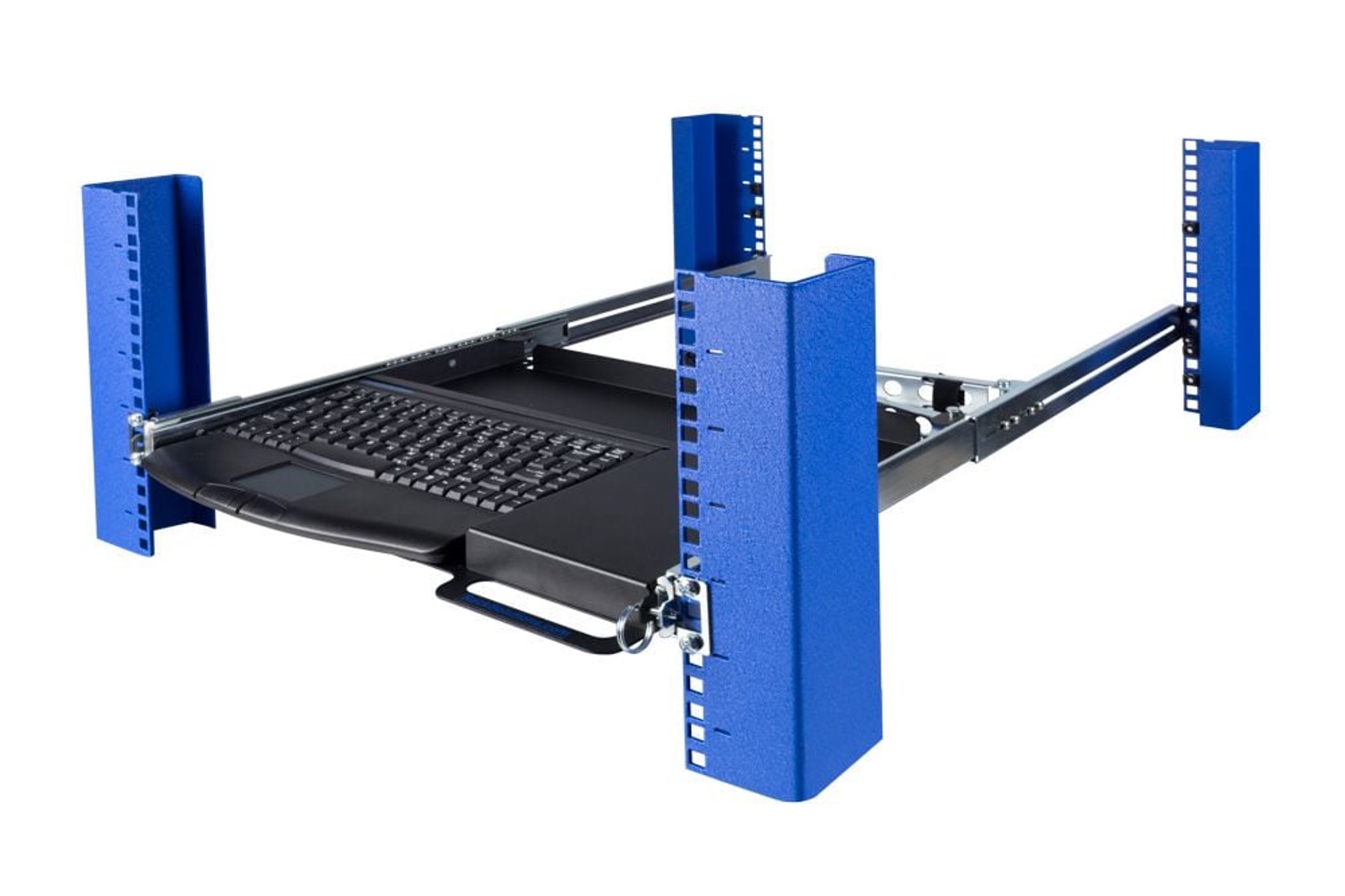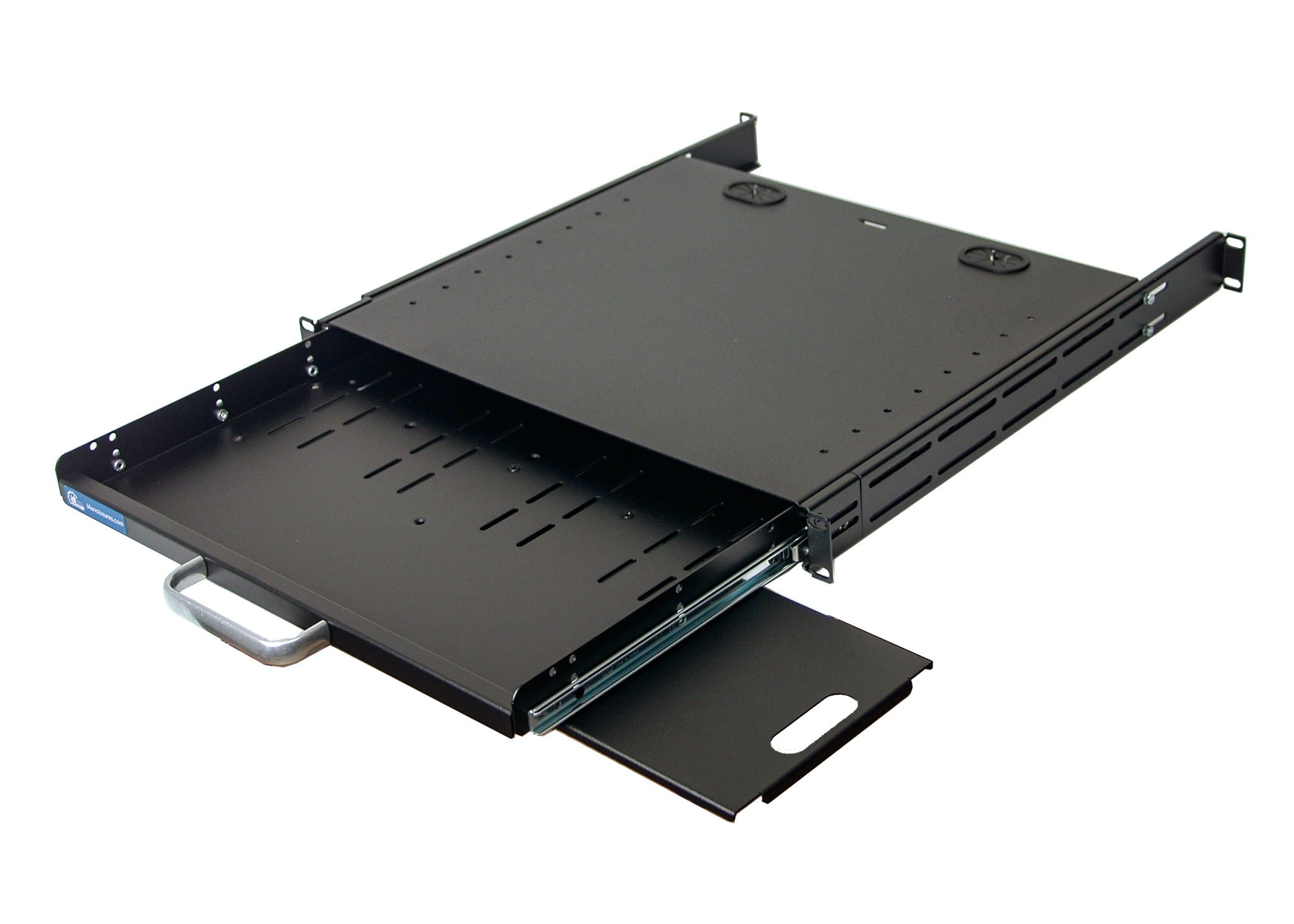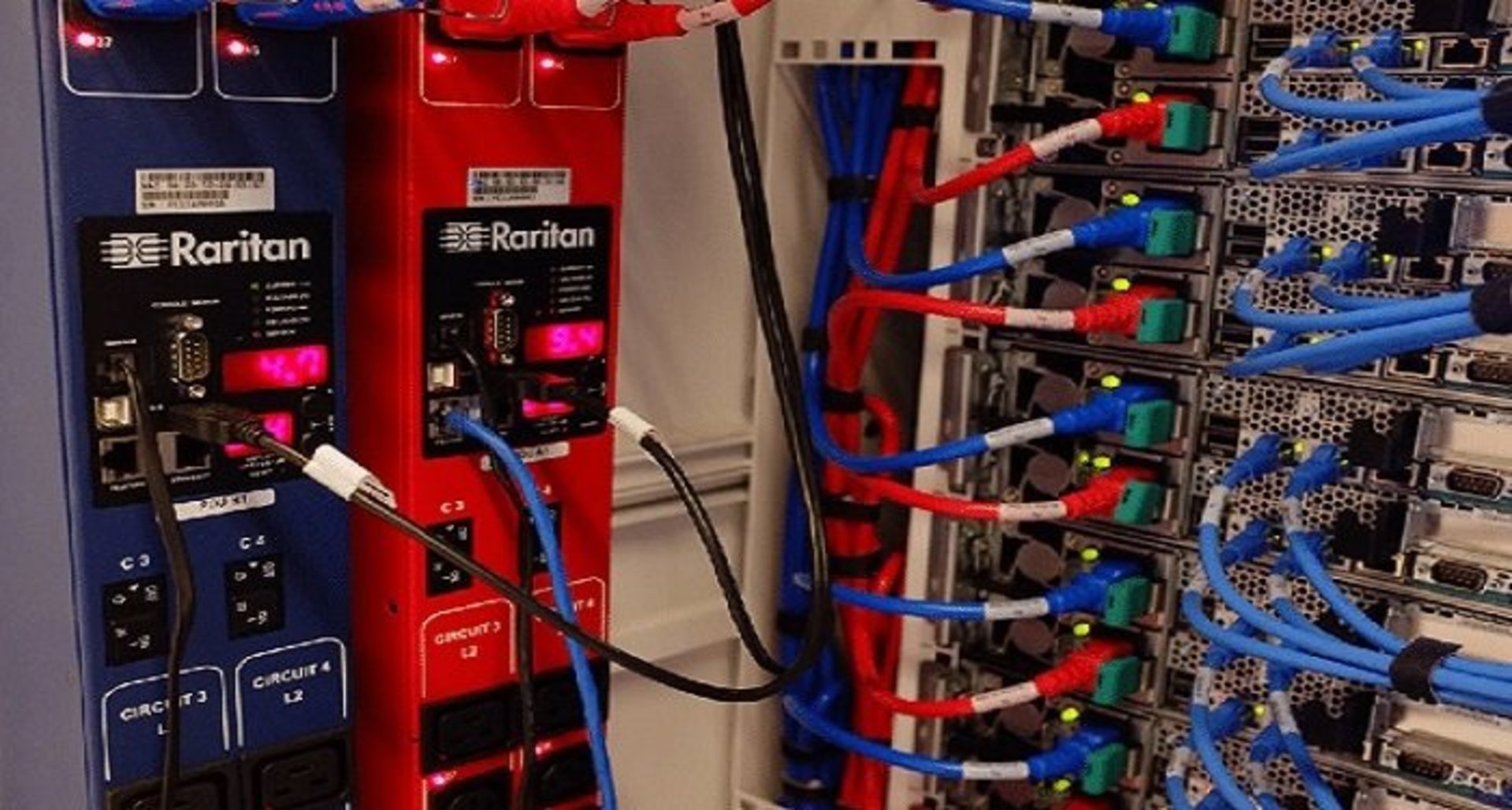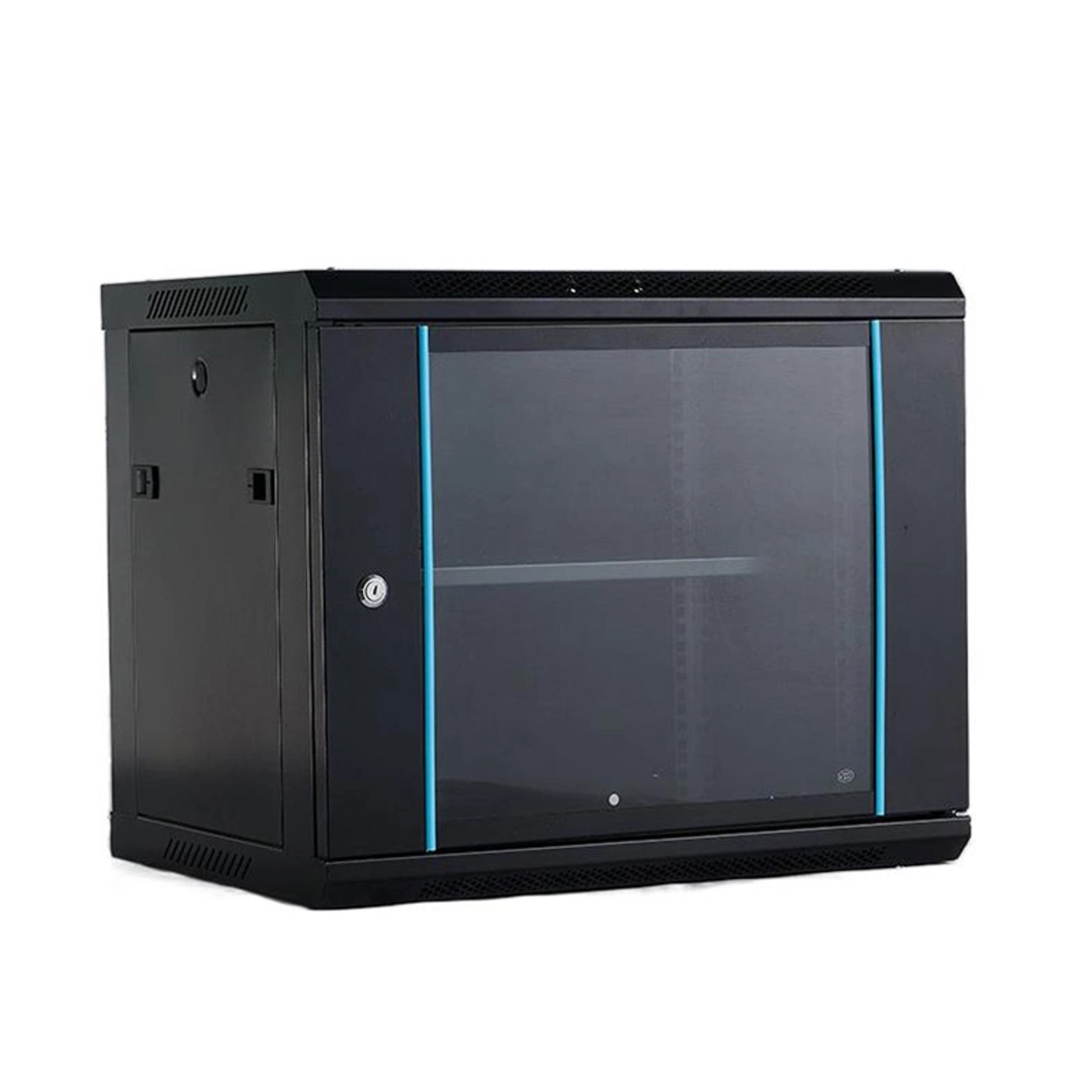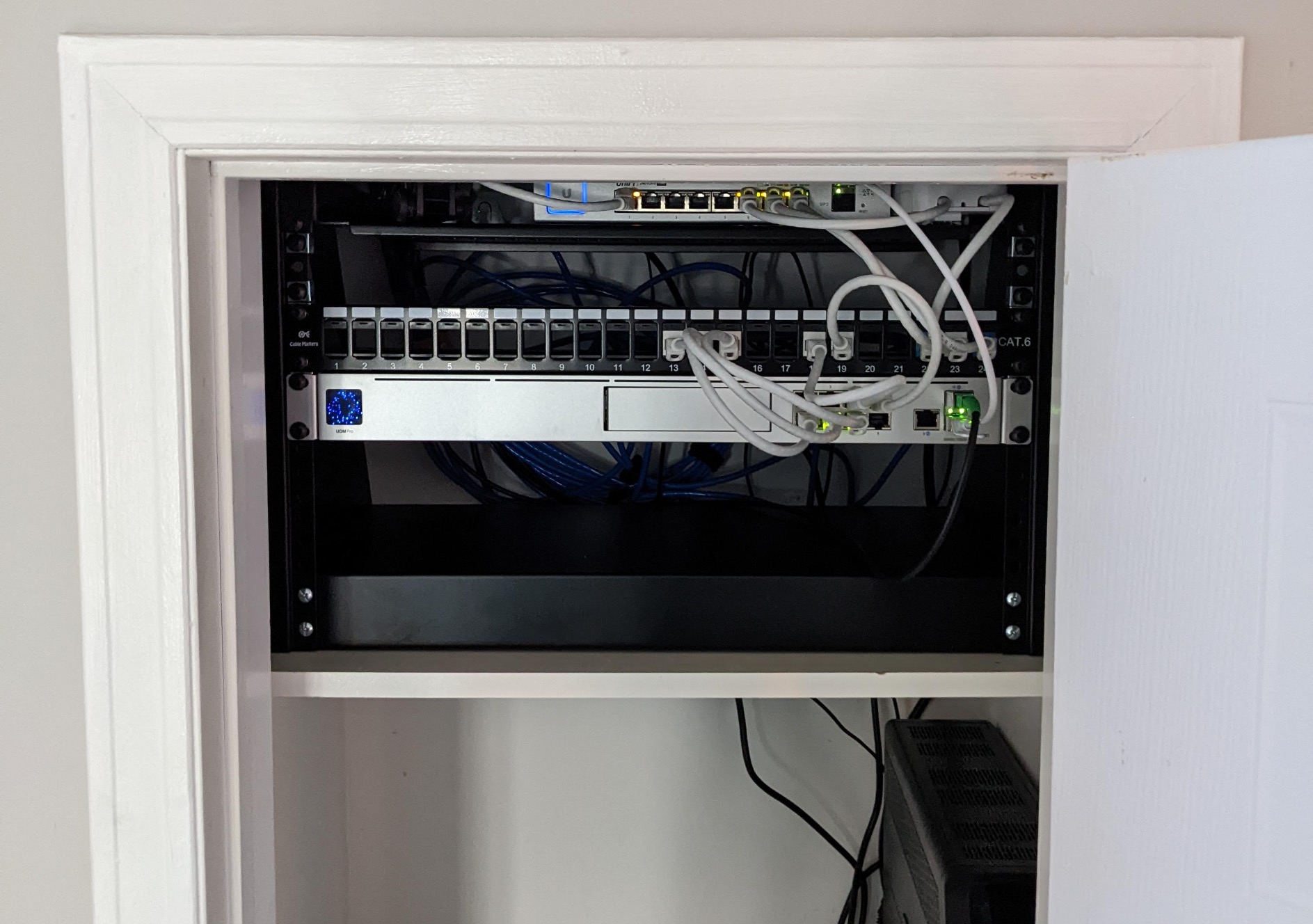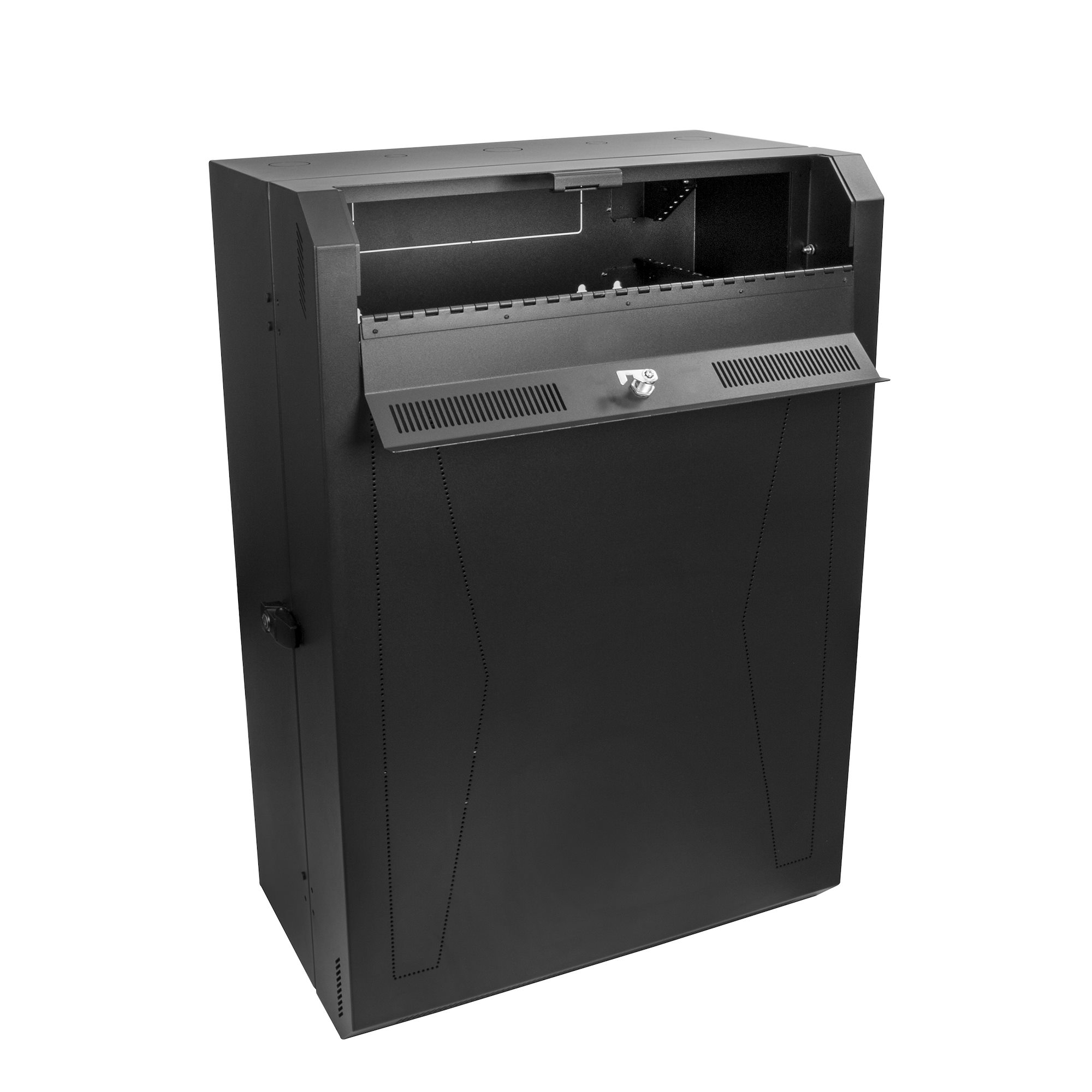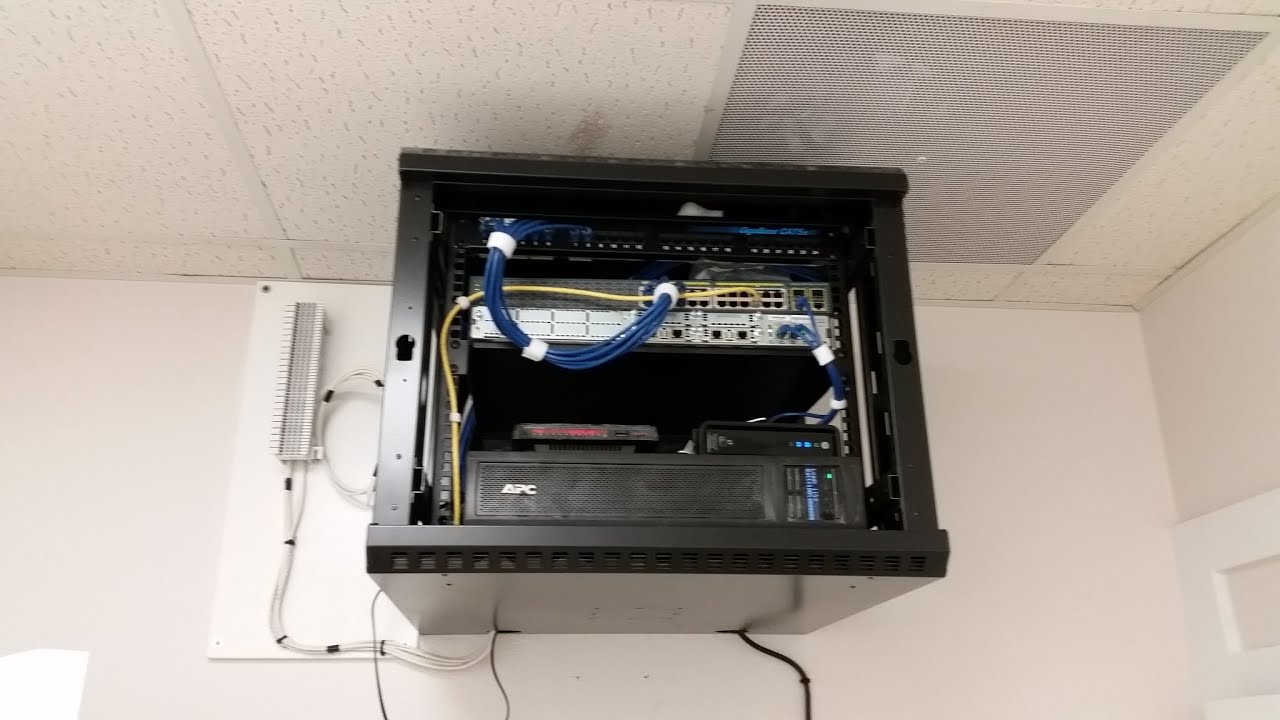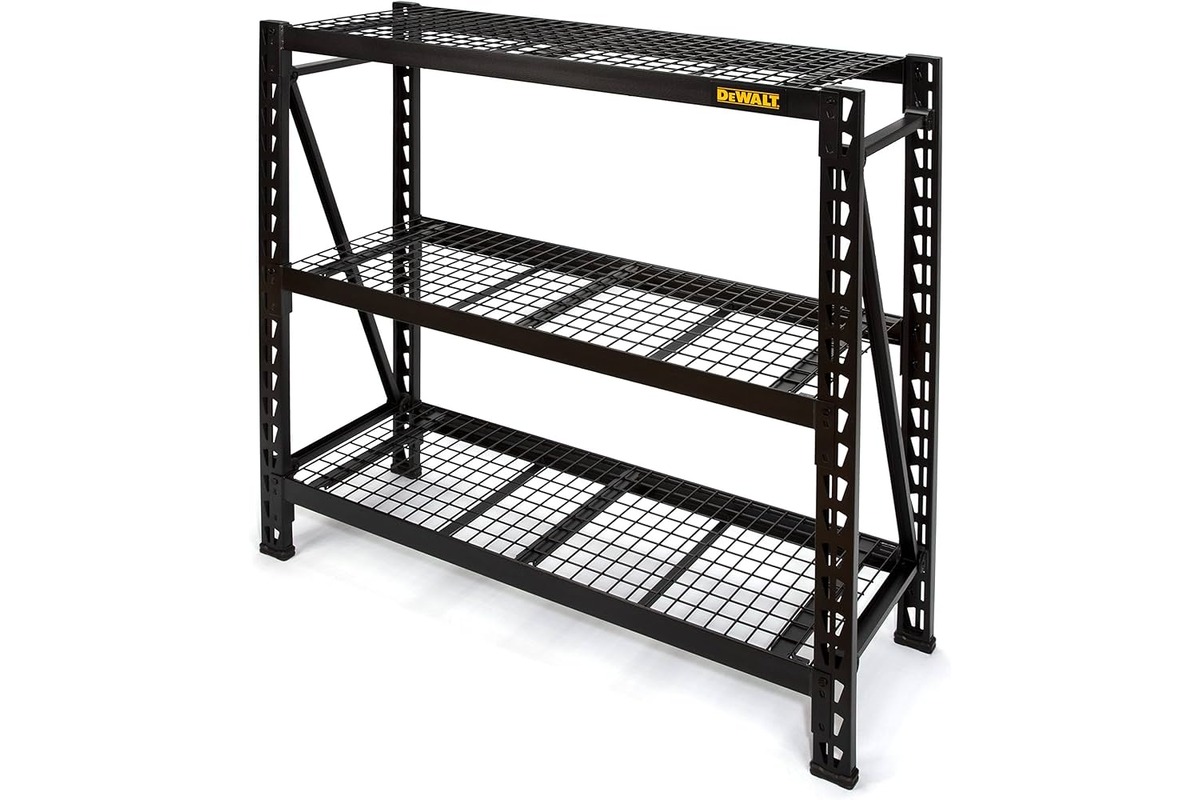Introduction
Server racks play a critical role in the data center infrastructure by providing a centralized and organized space to house servers, networking equipment, and other essential hardware. As technology continues to evolve and businesses become more reliant on digital operations, the demand for efficient server rack utilization becomes increasingly important.
In this article, we will explore the basics of server racks, the standard sizes available, and how to determine the amount of space required for your specific needs. We will also delve into the various factors that can affect server rack space usage and provide real-life examples to illustrate these concepts. Additionally, we will offer valuable tips for optimizing server rack space and discuss the future of server rack space efficiency.
Whether you are setting up a small server room or managing a large-scale data center, understanding how much space your server rack needs is crucial for optimal functionality, scalability, and future expansion.
So, let’s dive in and explore everything you need to know about server rack space requirements.
The Basics of Server Racks
Server racks are specifically designed to house and organize servers, networking equipment, power distribution units (PDUs), and other essential devices in a data center or server room environment. These racks come in various shapes and sizes but all serve the same purpose of providing a secure and efficient location for equipment deployment.
One of the key features of server racks is their standardized form factor. Most racks are built with a 19-inch wide framework, allowing for compatibility and easy mounting of equipment. The height of a server rack is typically measured in rack units (U), with each unit equal to 1.75 inches (44.45mm) in height. Common rack unit sizes range from 1U (1.75 inches) to 48U (84 inches), although smaller and larger options are also available.
Server racks are typically constructed using sturdy materials like steel or aluminum to ensure durability and strength. They are designed with ventilation features such as perforated doors and sides to maintain proper airflow and prevent equipment overheating. Additionally, many racks offer cable management features, such as cable trays and hook-and-loop straps, to keep cables organized and minimize clutter.
When it comes to rack types, two of the most popular are open-frame racks and enclosed racks. Open-frame racks have an open structure, allowing for easy access to equipment and providing excellent airflow. Enclosed racks, on the other hand, have solid sides and doors, providing added security and protection.
Another important aspect to consider is the weight capacity of a server rack. Depending on its design and construction, a rack can support a certain amount of weight. It is crucial to ensure that the rack can accommodate the weight of the equipment you plan to install to avoid any structural issues.
Overall, server racks provide a centralized and organized solution for housing essential equipment in data centers and server rooms. Understanding the basics of server racks sets the foundation for determining the appropriate rack size and optimizing space utilization, which we will explore further in the following sections.
Standard Server Rack Sizes
Server racks come in a range of standard sizes, allowing for flexibility and compatibility across different data center environments. These standard sizes are measured in rack units (U), with each unit equal to 1.75 inches (44.45mm) in height. Let’s take a closer look at some of the most common server rack sizes:
1. 1U (1.75 inches): The smallest rack size available, 1U racks are ideal for compact setups with limited equipment. They are commonly used for patch panels, network switches, and small servers.
2. 2U (3.5 inches): Slightly taller than 1U racks, 2U racks provide additional space for slightly larger devices. They are often used for larger network switches, blade servers, and some storage appliances.
3. 4U (7.0 inches): 4U racks offer even more space for larger equipment. They are commonly used for high-density servers, storage devices, and chassis-based switches.
4. 8U (14.0 inches): With double the height of a 4U rack, 8U racks provide ample space for larger servers and equipment. They are suitable for housing tower servers, large storage appliances, and other bulky devices.
5. 12U (21.0 inches): 12U racks are often used for mid-sized server deployments and can accommodate a combination of servers, switches, and other equipment.
6. 24U (42.0 inches): As we move into larger rack sizes, 24U racks offer significant space for expanding server environments. They can house a variety of equipment, including servers, storage arrays, and networking gear.
7. 42U (73.5 inches): The most common rack size in data centers, 42U racks provide substantial space for large-scale deployments. They are commonly used for housing servers, switches, PDUs, and other critical equipment.
8. 48U (84.0 inches): The tallest standard rack size available, 48U racks offer maximum vertical space for extensive server deployments. These racks are commonly found in enterprise data centers and can house a large number of servers, storage devices, and networking equipment.
It’s important to consider the specific space requirements of your equipment and plan accordingly when selecting a rack size. Additionally, keep in mind that non-standard sizes and custom racks are also available to meet unique needs and space constraints.
Determining the Amount of Space Needed
When planning a server rack deployment, accurately determining the amount of space needed is crucial for efficient utilization and future scalability. Here are some key factors to consider to help you calculate the required space:
1. Equipment Inventory: Begin by creating an inventory of all the equipment that will be housed in the server rack. Include servers, network switches, storage devices, power supplies, and any other hardware that needs to be accommodated.
2. Rack Unit (U) Count: Determine the number of rack units (U) each piece of equipment requires. This information is typically provided in the equipment’s technical specifications. Add up the total number of rack units to determine the overall height required.
3. Growth and Expansion: Anticipate future growth and expansion needs when calculating space requirements. Leave room for additional equipment that may be added in the future, considering factors such as planned upgrades, new technology deployments, and business growth projections.
4. Accessibility and Airflow: Consider the accessibility and airflow requirements for the equipment. Leave sufficient space between devices to ensure proper ventilation and ease of maintenance. Pay attention to any clearance requirements specified by the equipment manufacturer.
5. Cable Management: Account for cable management needs when calculating space. Plan for cable routing and organization, as well as any cable management accessories such as vertical cable managers or cable trays. Proper cable management not only makes maintenance easier but also contributes to better airflow and reduced clutter.
6. Horizontal and Vertical Space: Evaluate the physical dimensions of the server rack and determine if any space is needed for additional accessories, such as rack-mounted power distribution units (PDUs), rackmount consoles, or keyboard and mouse trays.
By considering these factors, you can accurately determine the amount of space needed for your server rack deployment. This will help you avoid overcrowding, ensure proper airflow, and leave room for future expansion.
Factors Affecting Server Rack Space Usage
Several factors can impact the utilization of server rack space. Understanding these factors is crucial for optimizing the efficiency of your server rack deployment. Let’s explore some of the key factors:
1. Equipment Size: The physical size of the equipment plays a significant role in space utilization. Larger servers and appliances require more rack units (U) and may occupy more horizontal and vertical space. Consider the dimensions of the equipment when planning the placement within the rack.
2. Mounting Options: Different equipment may have specific mounting requirements. Some devices are designed to be mounted vertically, while others are mounted horizontally. Depending on the type of equipment, the orientation may affect how much space is utilized within the rack.
3. Cable Management: Cable management is essential for proper organization and airflow. However, the way cables are routed and managed can impact space utilization. Careful planning of cable paths and the use of cable management accessories can help optimize space and reduce clutter.
4. Cooling and Ventilation: Adequate airflow and cooling are critical for preventing equipment overheating. The placement of equipment within the rack should allow for proper airflow and ventilation. Ensure that ventilation openings on servers and networking devices align with the rack’s perforated doors or sides to maximize cooling efficiency.
5. Power Distribution: The placement of power distribution units (PDUs) and power cables can impact space usage. Proper positioning of PDUs and efficient cable management can help optimize space while ensuring easy access to power outlets.
6. Equipment Weight: Heavy equipment requires sturdy rack structures and may impact how the weight is distributed within the rack. Consider the weight capacity of the rack and distribute heavier equipment evenly to avoid structural issues.
7. Future Expansion: Planning for future growth is crucial to avoid outgrowing your server rack space too quickly. Leave room for additional equipment and plan for expansion to accommodate the evolving needs of your business.
By considering these factors when designing and organizing your server rack, you can optimize space usage, ensure efficient airflow and cooling, and create a more manageable and scalable infrastructure.
Calculating Server Rack Space
Calculating the required server rack space is essential to ensure efficient utilization of available capacity. Here are the steps to help you accurately determine the space needed:
1. Determine the height of each equipment: Review the specifications of each piece of equipment to determine its required rack unit (U) height. Add up the total number of rack units for all devices that will be installed in the rack.
2. Consider clearance and airflow: Account for any clearance requirements specified by the equipment manufacturer. Leave enough space between devices to ensure proper airflow and access for maintenance. Consider any additional clearance needed for cable management or ventilation accessories.
3. Calculate the overall space: Multiply the total rack units by 1.75 inches (the height of one rack unit). This will give you the overall height required for your equipment.
4. Add space for accessories: Consider any additional accessories that will be installed in the rack, such as power distribution units (PDUs), cable management trays, or rack-mounted consoles. These accessories may require additional rack units of space.
5. Account for growth: Anticipate future growth and expansion when calculating server rack space. Leave room for additional equipment that may be added in the future, considering planned upgrades and business projections. It’s better to have extra space available to accommodate future needs.
6. Verify weight capacity: Ensure that the selected rack can support the weight of the installed equipment. Consider the individual weight of each piece of equipment and distribute the weight evenly within the rack to avoid overloading and structural issues.
By following these steps and taking into account the specific requirements of your equipment, you can accurately calculate the server rack space needed. This will help you optimize space utilization, ensure proper airflow, and provide room for future scalability.
Real-Life Examples of Server Rack Space Requirements
Real-life examples can help provide a better understanding of how server rack space requirements can vary based on the equipment and deployment scenario. Let’s explore a few common scenarios:
1. Small Business Setup: A small business may have a basic server setup consisting of a few 1U servers, a network switch, and a small storage appliance. In this case, a 6U or 8U rack would be sufficient to accommodate the equipment and leave room for future expansion.
2. Web Hosting Company: A web hosting company may have a larger-scale server deployment requiring multiple racks. Their infrastructure may consist of a mix of 1U and 2U servers, several storage arrays, multiple switches, and redundant power distribution units (PDUs). In this case, they would need several 42U racks or potentially even larger 48U racks to accommodate the equipment and allow for future growth.
3. Data Center Environment: A data center serving multiple clients and housing a wide range of equipment would require racks with significant capacity. They might house various server sizes, blade servers, high-density storage arrays, and networking equipment. A mix of rack sizes, including 42U, 45U, and 48U, would be needed to meet the diverse equipment requirements.
4. High-Performance Computing Cluster: High-performance computing clusters, commonly found in scientific research institutions or financial organizations, require racks with high power and cooling densities. They may include specialized servers, accelerators, interconnect switches, and high-capacity storage. Rack sizes of 40U or higher, with emphasis on adequate cooling and power infrastructure, would be necessary to support the dense and demanding computing environment.
These examples illustrate how server rack space requirements can vary based on the size, complexity, and future growth plans of different organizations. It is crucial to assess the specific needs of your equipment and plan accordingly to optimize space utilization and scalability in real-life deployments.
Top Tips for Optimizing Server Rack Space
Maximizing the utilization of server rack space is essential for efficiency, cost-effectiveness, and scalability. Here are some top tips for optimizing server rack space:
1. Consolidate and virtualize: Consider consolidating multiple physical servers into virtual machines. Virtualization allows you to run multiple virtual servers on a single physical machine, reducing the number of physical servers required and thereby freeing up valuable rack space.
2. Use high-density servers: Opt for high-density servers that can house multiple server nodes within a single chassis. These servers allow for greater compute power in a smaller form factor, reducing the overall rack space needed for the same processing capacity.
3. Utilize blade servers: Blade servers are slim, modular server units that share common resources within a chassis. They offer high compute density and efficient use of rack space. With blade servers, you can fit numerous server nodes in a single blade enclosure, reducing the overall footprint.
4. Implement modular storage: Consider adopting modular storage arrays that allow for expansion as needed. These arrays can be customized with varying drive configurations and capacities, ensuring efficient use of storage space within the rack.
5. Optimize cable management: Proper cable management is crucial for maintaining a clean and organized rack space. Use vertical cable managers, cable trays, and labeled cables to keep the cabling neat and minimize clutter. Well-organized cables not only improve aesthetics but also facilitate better airflow and easier maintenance.
6. Choose compact networking equipment: Look for compact switches and routers that offer a high port density. This helps reduce the physical footprint of networking devices, allowing for more efficient space utilization within the rack.
7. Plan for future growth: Anticipate future growth and scalability needs when designing your server rack setup. Leave room for additional equipment and plan for expansion to avoid outgrowing the available rack space too quickly.
8. Consider cloud services: Explore the possibility of offloading some of your computing requirements to cloud services. By using the cloud, you can reduce the number of physical servers needed in your rack, allowing for better utilization of the remaining space.
By implementing these tips, you can optimize server rack space utilization, improve efficiency, and create a scalable infrastructure that meets your business needs.
The Future of Server Rack Space Efficiency
The evolution of technology and the increasing demand for more powerful and efficient data centers are driving continuous improvements in server rack space efficiency. Here are some developments that can shape the future of server rack space utilization:
1. Hyper-converged Infrastructure: Hyper-converged infrastructure (HCI) combines compute, storage, and networking in a single appliance. These compact systems eliminate the need for separate servers, storage arrays, and networking equipment, resulting in reduced rack space requirements and simplified management.
2. Edge Computing: The rise of edge computing, driven by the growth of IoT devices and the need for real-time data processing, is leading to the deployment of smaller, localized data centers in edge locations. These edge data centers often have space limitations, driving the need for compact, high-density server rack solutions.
3. Rack-Level Efficiency: Efforts are underway to improve efficiency at the rack level. This includes innovative rack design, such as liquid cooling solutions that enable denser equipment configurations and reduce the need for large airflow pathways. Rack-level power distribution and monitoring technologies are also advancing to optimize power utilization and minimize wasted energy.
4. Modular and Flexible Designs: Modular rack designs allow for scalability and adaptability. Racks can be expanded or adjusted as needed, accommodating future growth without the need for major infrastructure changes. Furthermore, modular designs enable greater flexibility in terms of equipment placement and airflow management.
5. Enhanced Cooling Technologies: Improvements in cooling technologies are critical for efficient rack space utilization. Advancements in liquid cooling, direct-to-chip cooling, and advanced airflow management can help dissipate heat more effectively, enabling denser equipment configurations and reducing the need for excessive rack space for cooling infrastructure.
6. Resource Optimization through AI and Automation: Artificial Intelligence (AI) and automation technologies are becoming increasingly integrated into data center operations. AI can optimize workload placement and resource allocation, leading to better utilization of server rack space. Automation technologies streamline processes, reducing human errors and optimizing equipment placement within racks.
7. Cloud Computing: Cloud computing continues to reshape the data center landscape. With more organizations leveraging cloud services, the on-premises infrastructure requirements are reduced. This can lead to smaller, more efficient server rack setups, as well as the ability to scale resources dynamically based on demand.
These advancements and trends indicate a future where server rack space efficiency will continue to evolve. By leveraging new technologies and innovative design approaches, data centers can optimize space utilization, reduce costs, and achieve higher overall operational efficiency.
Conclusion
Optimizing server rack space is crucial for efficient data center management. By understanding the basics of server racks, standard rack sizes, and the factors that affect space utilization, you can make informed decisions when designing and organizing your infrastructure. Calculating the required space, considering real-life examples, and implementing optimization strategies will help you maximize the use of available rack space while ensuring proper airflow, cooling, and scalability.
The future of server rack space efficiency looks promising, with advancements in hyper-converged infrastructure, edge computing, modular designs, cooling technologies, AI, and automation. These developments will continue to drive compact and flexible server rack solutions, allowing for higher density, better resource utilization, and more efficient data center operations.
As technology evolves and businesses grow, it is crucial to regularly review and adapt your server rack setup to meet current and future needs. Whether you are a small business setting up a server room or managing a large-scale data center, optimizing rack space is essential for maximizing performance, reducing costs, and enabling future expansion.
By staying informed about the latest trends and industry best practices, you can ensure that your server rack space is utilized efficiently, enabling your infrastructure to support your business objectives effectively.







